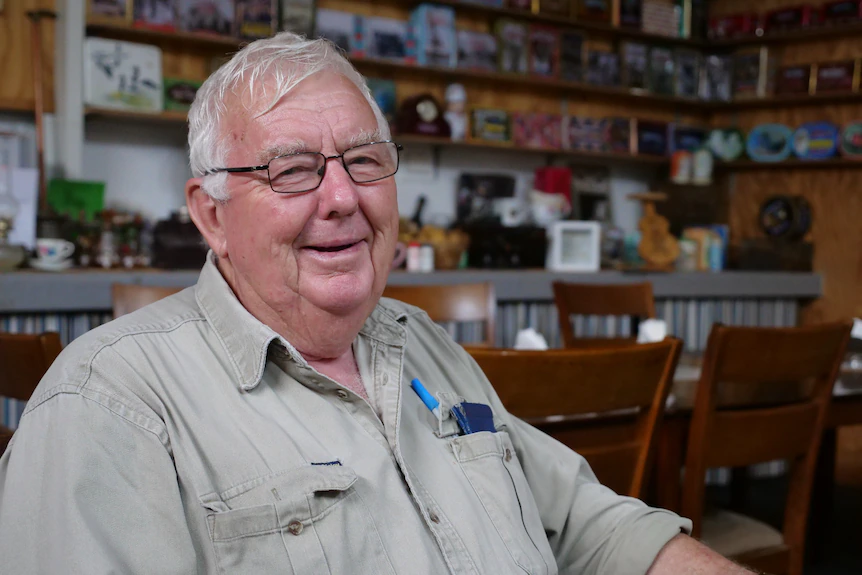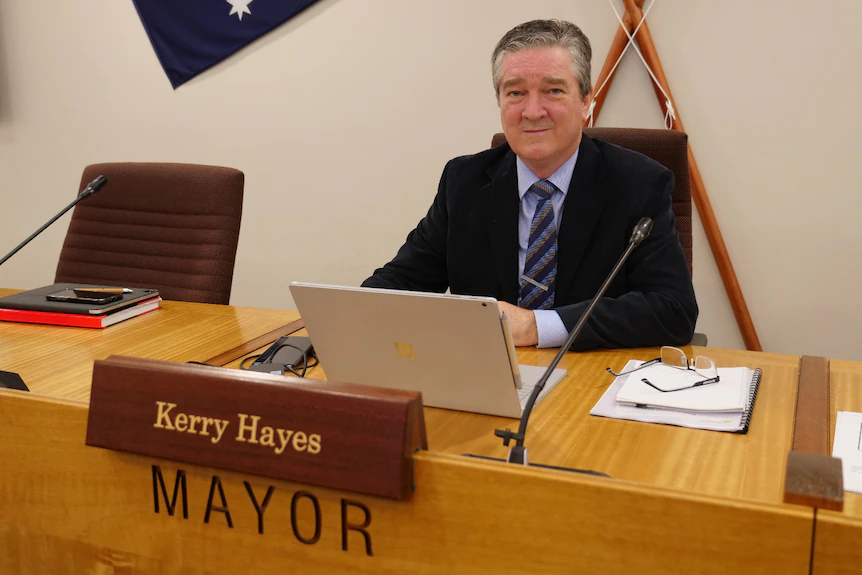When the mining boom turned to bust a decade ago in central Queensland, John Hallam's hotel in the town of Capella emptied out almost overnight.
"It was devastating," Mr Hallam said.
He credits the region's diversity of industry, particularly agriculture, for keeping businesses in the town afloat.
Mr Hallam said given the contribution that cattle and crops have made to the state, it was wrong that the major parties have ignored regional and rural voices this election campaign.
"All they [politicians] seem to do, in my view, is they chase the populated areas where the votes are, and they really disregard rural people," he said.
"Without a farmer, we'd starve."

John Hallam has seen a lot of mining booms and busts in his 37 years in Capella.(ABC Capricornia: Erin Semmler)
Billion-dollar industry
The Central Highlands sits in the Bowen Basin, which has the largest coal deposits in Australia and 11 of the region's 43 coal mines.
It also pumps out almost $1 billion a year through agriculture.
It has the largest citrus farm in the southern hemisphere. It produces table grapes, beef, cotton, and grains.
The region's mayor Kerry Hayes said the two industries were not in competition with each other, but he would like to see more government support and investment into agriculture.
"We've got people that are changing agriculture, changing productivity, and these are all words that governments love to see," Mr Hayes said.
"But they seem to have a bit of a block when they see it actually happening in regions and don't get that regional investment path right."

Kerry Hayes says industries now co-exist, unlike 30 years ago when mining leases were moving into agricultural land and causing some angst.(ABC Capricornia: Erin Semmler)
In March, the National Farmers Federation identified 20 regional centres and recommended more than $1.4 billion in new investment to grow their populations.
One of these centres is Emerald, with a population of just under 14,500 people and in the heart of the Central Highlands.
"It would mean investment into infrastructure, housing, and health to make these liveable communities," Mr Hayes said of the NFF proposal.
Mr Hayes said the annual output of agriculture in the region was significant and growing, but the issue was labour and ensuring people could get to the region to take up its jobs.
Mobile coverage and housing
Renee Anderson operates a cotton farm on the outskirts of Emerald, and despite unseasonal May rain that destroyed some crops in the region she said the industry was looking rosy.
"Coal isn't the only place where the jobs are in town," Ms Anderson said, pointing out there were about 1,500 businesses in Emerald associated with agriculture.
"We need those supporting industries if we're going to get families here … and mining, it's quite often boom and bust, so we need other industries that keep the communities going during those years."
But there were some barriers.
"We've currently got people moving into town for the cotton industry and struggling to find housing," Ms Anderson said.
There was also the issue of telecommunications.
"All of our farm is run online, whether it's banking or marketing, and everything we do is cloud based," she said.
"It's actually quite a struggle to get a phone call out at times."
Ms Anderson would also like to see a focus on a good road network to get produce in and out of rural areas and into the cities.
Keeping people in the community
Arjun Bloemer is the chief executive of the Central Highland Development Corporation and said he would like to see "a bit more" commitment from both Labor and the LNP.
he corporation advocates not just for agriculture, but for the region, and sometimes there was a little frustration at not being heard, Mr Bloemer said.
"We see a lot of focus on the coastal areas, but it is up to us to make sure we are heard," he said.
Despite the economic opportunities in agriculture, the main challenge was attracting and keeping a workforce.
"Liveability is a big topic for us and housing affordability," Mr Bloemer said.
"There is a need for more affordable housing because not everyone works in mining and can afford some of the rents that are being asked. That creates a challenge."
With a large horticulture industry, the challenge has been getting an overseas workforce, particularly through COVID.
"So we're very keen to see an effective visa program and strong global relationships to bring in the right people to support our industry," Mr Bloemer added.
Larry Daniels has run a mix of cattle and crops north of Emerald his whole life and he has seen mining boom and bust cycles.
While mining has had a big voice, agriculture was never forgotten by those in the region, he said.
"Some miners have come and gone, but basically we're in a good position here because of our diversity of cattle, cropping, irrigation and mining. It has been keeping most businesses afloat," he said.
And the push for mining was not as big as it was a decade or two ago, he said.
Political promises
The LNP's David Littleproud said central Queensland was a major agricultural production area of Australia, but the Coalition shares concerns of the industry all over Australia.
"The government would prioritise solving the agriculture labour shortage by signing on more countries onto the agricultural visa so there is a long-term solution for this issue," Mr Littleproud said.
"We will extend the reach of our farmers into new and expanded export markets with the work of our agriculture ambassadors around the world, and simplifying the processes for exporters to get their products overseas.
"Protecting our agriculture from biosecurity threats so the industry can continue to grow and achieve its goal of $100 billion by 2030 is a priority."
Labor's candidates for Flynn and Capricornia, Matt Burnett and Russell Roberston, said the ALP understood the importance of the agricultural industry in central Queensland as it supported local jobs, the local economy, and put food on local tables.
"That's why Labor has committed $6 million for Beef Week 2024 to support the local industry and showcase CQ to the world," the party said in a statement.
"An Albanese Labor government has real, practical plans for future growth, like the National Reconstruction Fund, which will help producers in central Queensland grow and value-add to their business.
"It's hard to find workers for the industries we rely on, so Labor will address ag worker shortages by delivering a dedicated agriculture workers visa, as well as free TAFE places for people studying in an area of skills shortage, to fix the long-term pipeline of workers."
y Inga Stünzner